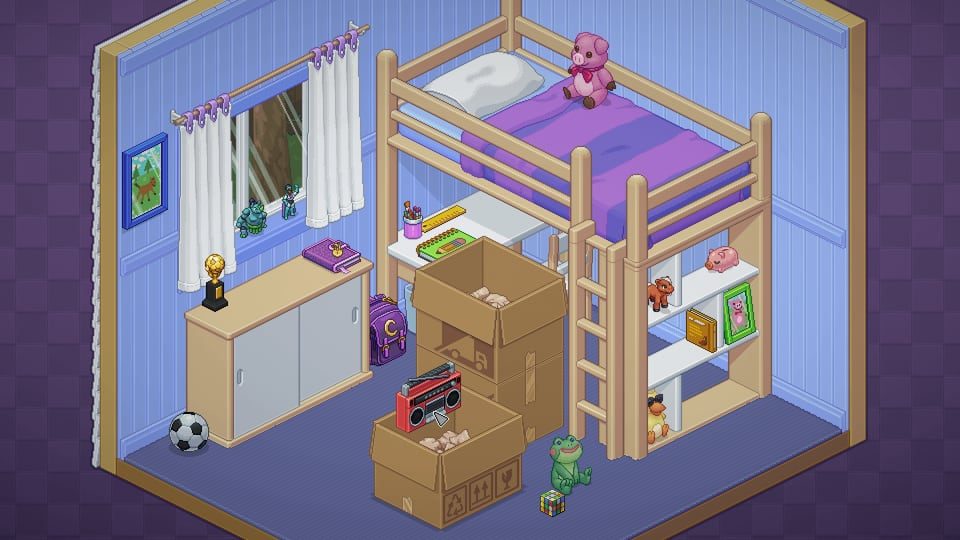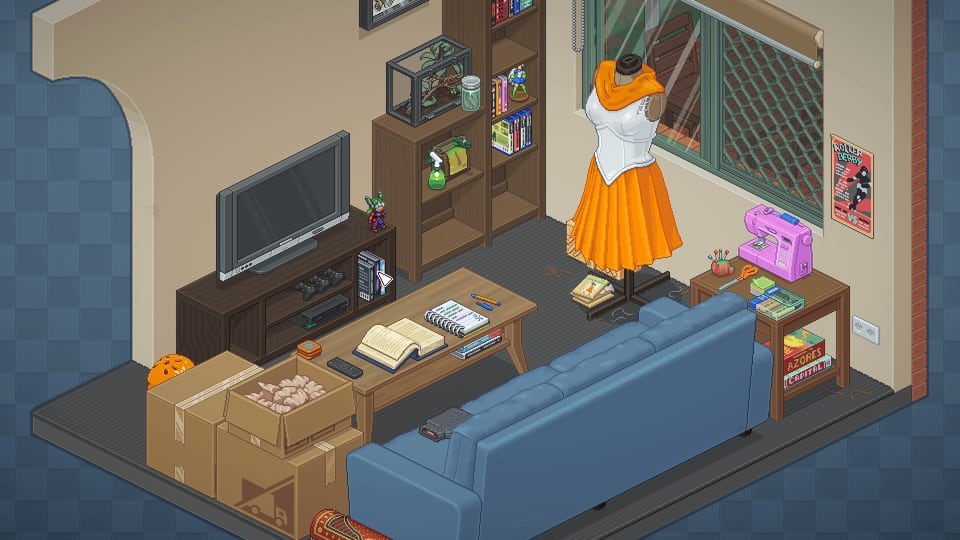
Modern life is filled with stuff. From sentimental possessions to the latest gadget or fad, we too often go from defining ourselves through our collections and objects to being constrained and controlled by them. The longer we live in one place, the more we accumulate and the more our space becomes cluttered and filled. This is never more apparent than when we eventually have to move home and make decisions about what to keep and what to discard.
Unpacking takes this recurring life event and turns it into a touching and intimate story with no dialogue or language of any kind. The result is one of the most charming and original indie games of recent times.
The core gameplay concept of Unpacking is as simple as it is original. Unlike shape puzzles like Tetris or Columns, the aim here isn’t to match things so that they disappear, but instead to fit your belongings into the beautifully realised pixel rooms in a way that works both logically and aesthetically. Beginning with spaces in a variety of states of being occupied by possessions, you must open a series of packing boxes and take out individual items and put them in the place you think they best fit. While this central mechanic remains constant throughout the entire game it is skilfully mixed up through the introduction of different environments with their own challenges and restrictions – although at first glance they all look and feel like standard domestic locations.
While initially the graphics may seem quite basic, there is a level of care and craft in the placing of every pixel. Every room has a genuine sense of being a real space and there’s a real skill and craftsmanship involved in making such pixelated depictions of household objects so easily recognisable. The use of colour is also worth noting, as this can be manipulated to add your own touch of flair to a room. My daughter became very annoyed with my lacking care when putting away clothes and put me to shame with her imaginative display that set out everything in a rainbow pattern. The degree to which you can put your own spin on such a simple mechanic is testament to how brilliant put together Unpacking is.

The music and sound effects are suitably charming as well, the latter employing a frankly ridiculous number of foley effects to ensure that no matter what object you are placing and whatever surface it is being place upon it will have a distinct and appropriate sound effect. This attention to detail adds to the overall impression of a game that is totally suffused with charm and craft.
While the details of your unpacking are particular to your own approach and personality, the environmental narrative is consistent for every player. Nothing is conveyed through dialogue or language, though, as every story beat is achieved through the objects and spaces you are working with. This begins with a young girl’s first room of her own, leaving you to find space for art materials, toys, and a suitably large collection of teddies and plushes. I chose to place the latter all over the bed in the same way that my kids always have (my own childhood experience is too hazy to recall given my advanced years) but you could equally place them on a cabinet or on the floor. Indeed, the latter option has been used to incredible effect in a popular video that uses the game’s replay function to stage a football game between the cuddly toys.
This kind of approach is just perfectly suited to the sense of play here with the game serving as a kind of inverted sandbox – one that is elevated by its restricted play area – and works in sharp relief to the huge open worlds of so many contemporary titles.

As the player character grows up you’ll unpack their belongings in a university dorm, a group shared house, and then in houses shared with what appears to be intimate partners. I won’t go into more details here as the unfolding story deserves to be experienced through the gradual unpacking, both of the objects themselves and their developing significance. Suffice it to say that you begin to develop your own affection for many of the character’s possessions and it is always noticeable when something is lost along the way.
While there is a great deal of freedom in where you can place items, you do need to follow the basic logic of filling a house. Most objects are packed in boxes stored in the room to which they belong, but in true moving house fashion, there are often stray items that require some more lateral thinking. This aspect is enhanced by the pixelated style and there are a few things that may need close investigation before you can work out where they belong. Different environments also have different rules as to whether you are able to move the items that are already there or not, with each of these rules fitting seamlessly with the different circumstances of the living arrangement. Many objects can be interacted with as well as placed and in fact most of the game’s achievements require you to do so.



